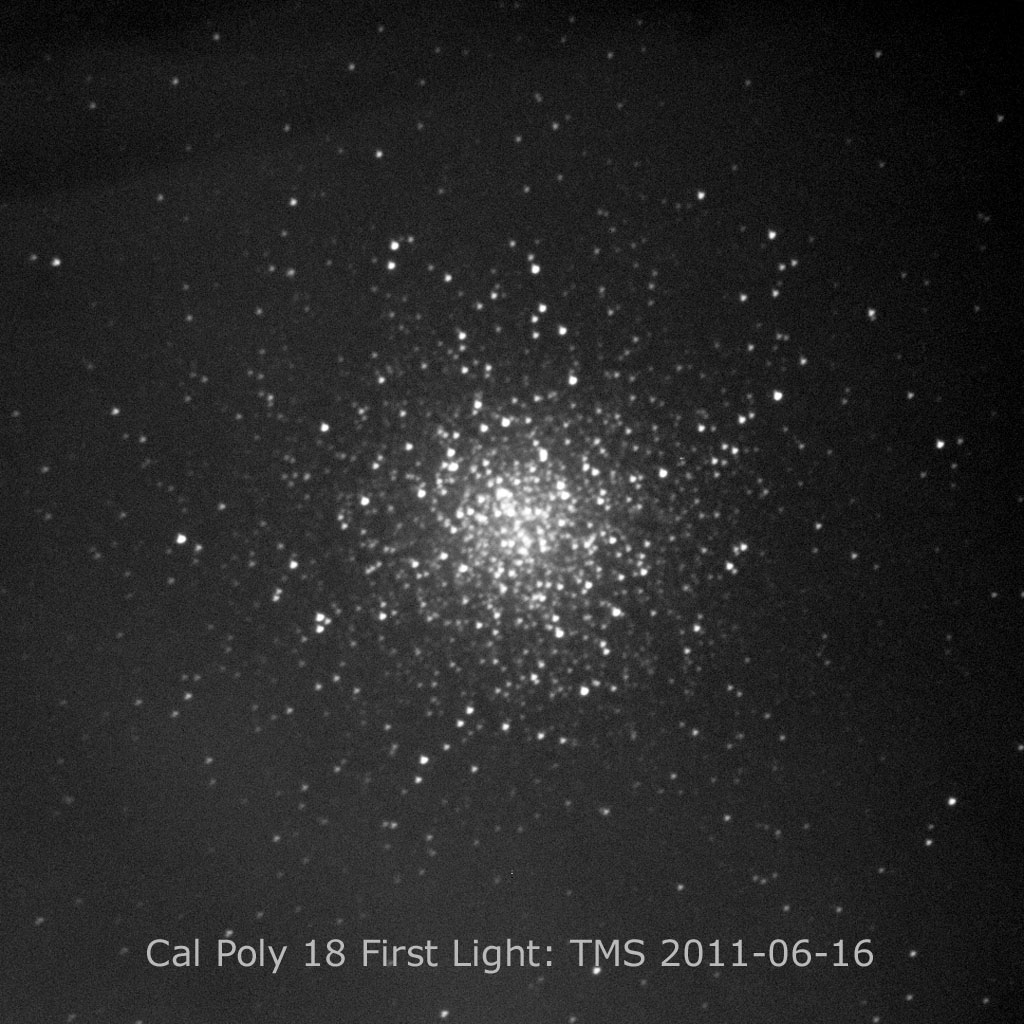
Cal Poly 18 Bulletin 02
2011-06-16: First Light at TMS
Dan: Finally, we got a night with clear enough weather to test CalPoly scope. Richard drove up from Lyons, and Howard joined us too. We had fun and frustrations... The two biggest were the azimuth gap is quite large for the azimuth encoder tape (we had pointed the gap to the north). Two times (we don't have limit switches on the scope yet), the encoder ran into this gap, and we had to restart the system.
The only other technical trouble we had was the camera driver acted up a few times.
We did a PXP run, and had a pretty bad model. I ran it through Dave's newer PointXP, and it found out the ticks per rev were wrong (see photo below, third model). We used the TPR that the new PXP recommended, and did another model, which was much better (see photo below, fourth model). The better model model was 15 arc seconds RMS, but with the new PXP it was about 9 arc seconds RMS. This is pretty good, considering the focuser mounting and secondary mounting which we all agreed needs major attention.
We star tested the mirror, and it appears it's not going to be an issue, looks not bad at all.
We used two Ethernet to USB adapters, one for the camera, and one for the telescope. These appeared to work ok, and saved us from having a computer at the telescope. When we needed a computer at the telescope, we used my laptop, and accessed my desktop. Wierd, eh? My laptop, connected wirelessly to my desktop, 250 feet away, and my desktop running all the camera/scope software!
This is the Ethernet to USB converters we used: http://www.startech.com/product/USB1000IP-10-100-1000-Mbps-Gigabit-1-Port-USB-over-IP-Device-Server
Howard: I’m still excited about the testing of the 18 inch last night and am sure that once the play in the diagonal mirror assembly is taken care of the tracking accuracy will be even more spectacular. Although I was just watching you two guys do all the brain work, I felt like I was witnessing a bit of ATM history – DD has arrived!
Richard: Pointing more than adequate for photometry/science observations. Tracking appears smooth with no glitches, even with poor model. (Yay!)
Focal length of mirror, measured from center of curvature: 1899 mm +/- 10 mm estimated. Mirror is f/4.15.
Mirror shows straight Ronchi bands. Knife edge using Ronchi shows seeing worse than figure errors, gives decent null.
Focal length of mirror with Paracorr, measured by astrometry: 2220 mm +/- 2 mm.
Focus currently occurs at 7.0 inches from focuser plate.
Significant mechanical issues:
Torsional oscillation in secondary shroud
Thin focuser plate probably deflects
Collimation of secondary could not be locked
Possible mirror motion of flexure
Azimuth encoder tape only covers about 270 degrees
No baffling on tube; severe problems with stray light
Annoying problem:
Camera filter wheel caused camera link to freeze repeatedly
See stacked images below made with open-loop tracking (no guiding!)
Overall assessment: This system is going to work beautifully.

First Light: 30 seconds with SBIG ST8 CCD camera. Star images ~3.4 arcsec FWHM.
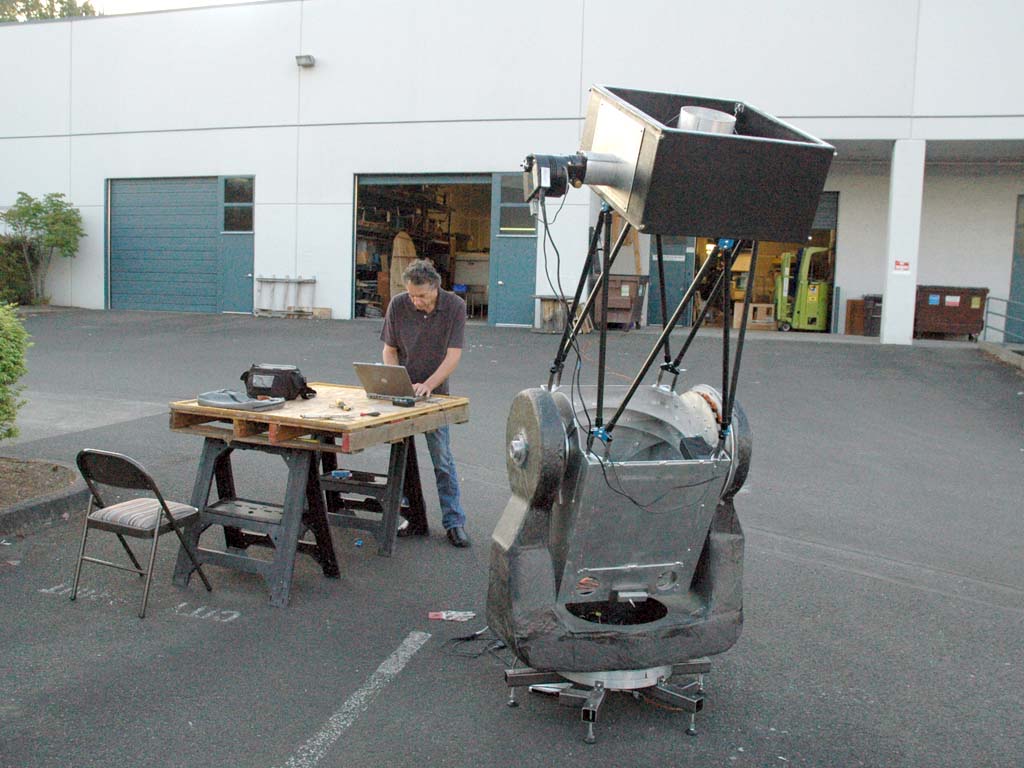
Early evening, setting up before dark...
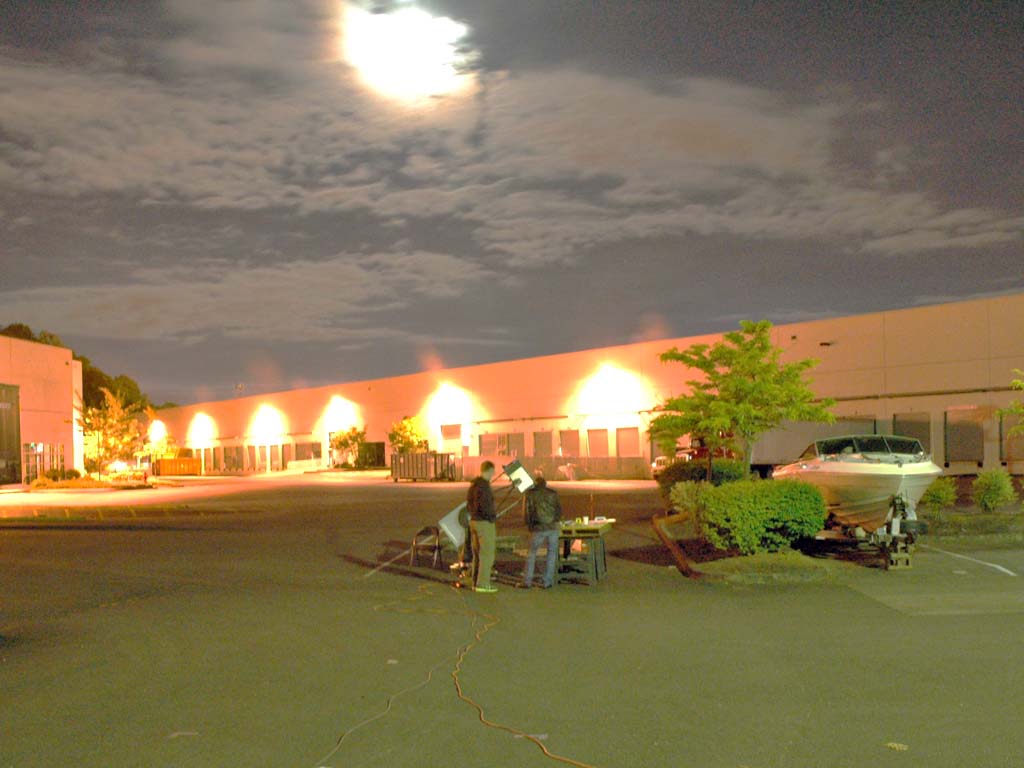
Sometime after midnight, asphalt parking lot, security lights, full moon in the sky.
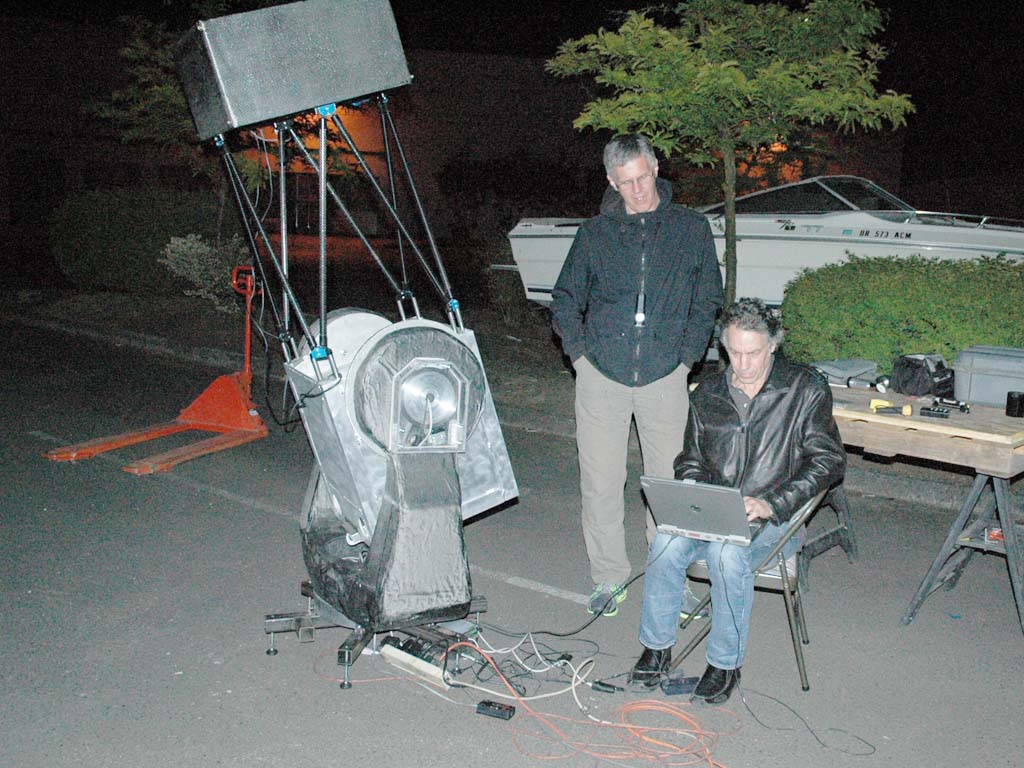
About the time of first light: Dan uses laptop to operate remote desktop control computer.
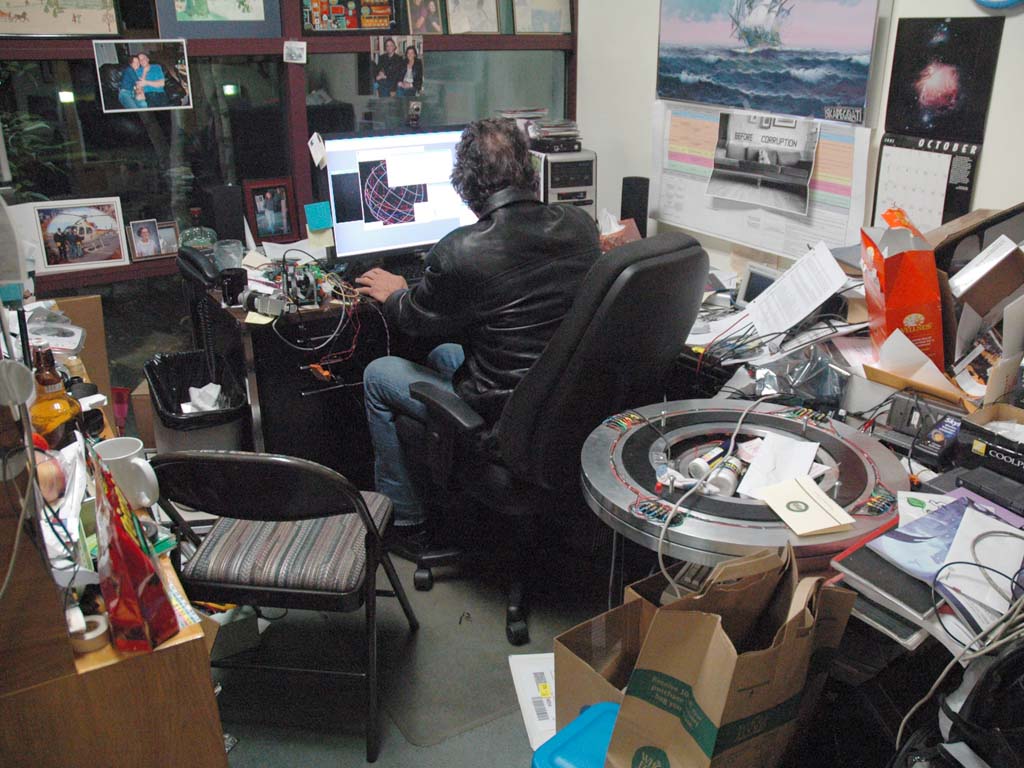
Telescope control from Dan's office.
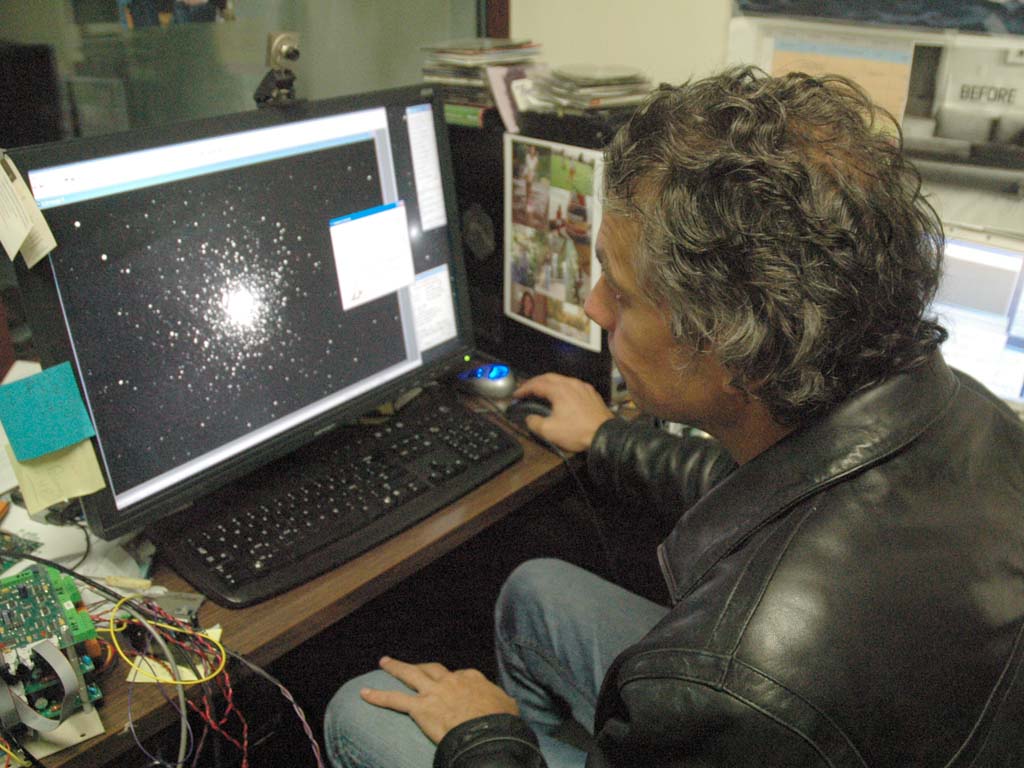
First light image on the screen.
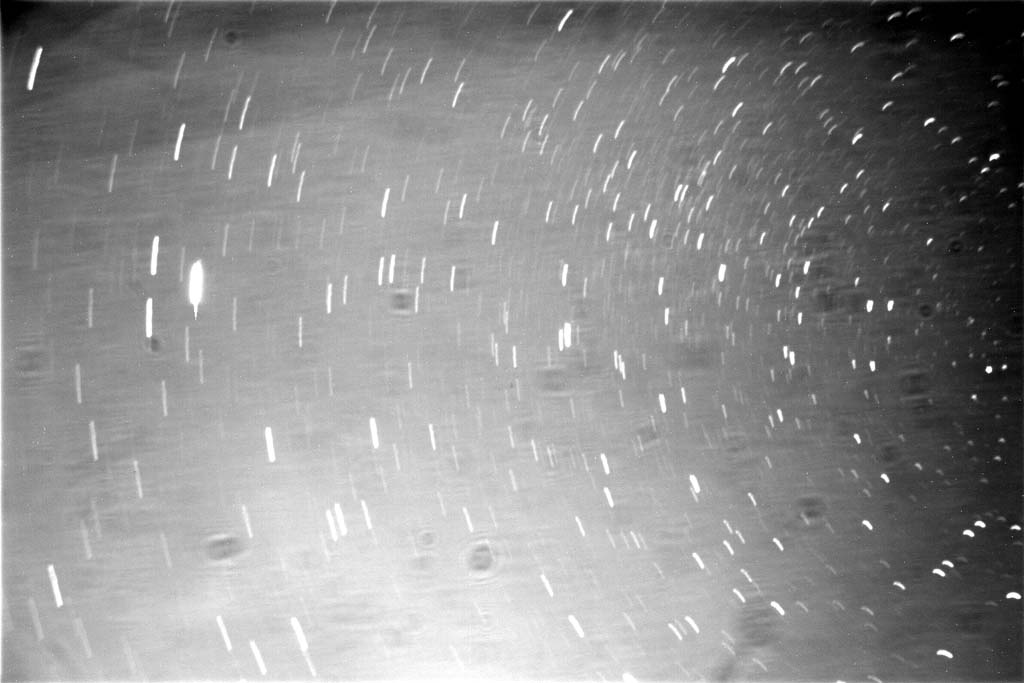
Tracking for 23
minutes using third pointing model.
Stack of 37 images. Note smooth field rotation; no glitches in
open-loop tracking.
Note that images are not as sharp as those in first light image.
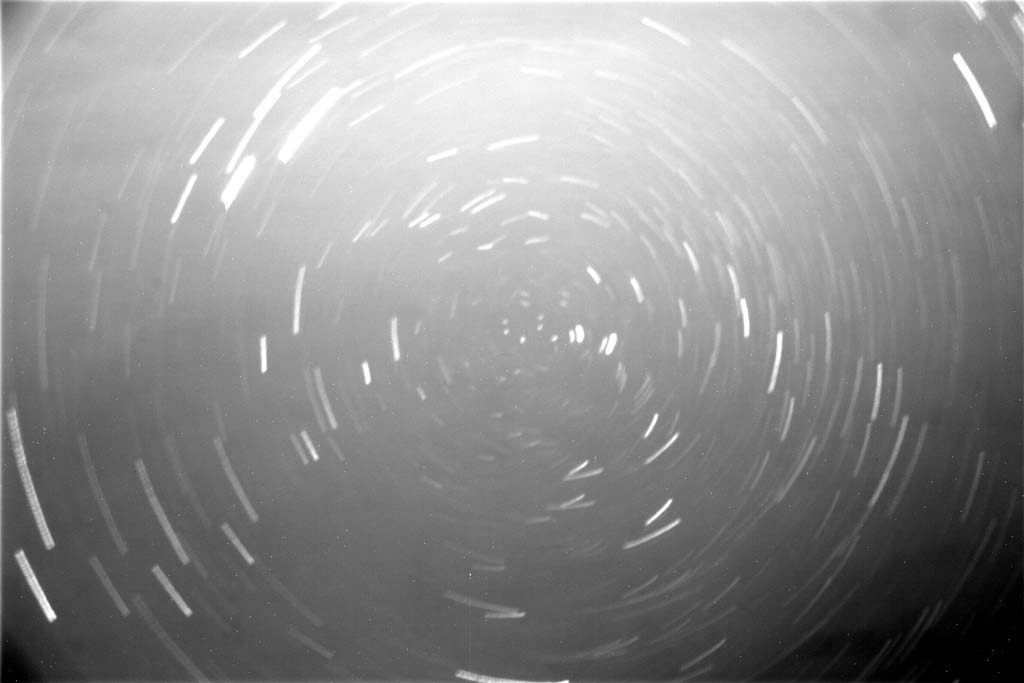
Tracking for 32
minutes using fourth pointing model.
Stack of 54 images. Pointing changes after ~25 images.
Also note continued decline in focus/image quality.
This is Cal Poly Bulletin 02
Main CalPoly Bulletin page or go back to Bulletin 01 or ahead to Bulletin 03
Return to Richard Berry's Home Page